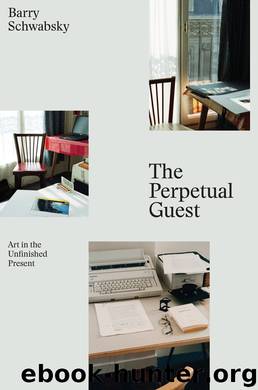The Perpetual Guest by Barry Schwabsky

Author:Barry Schwabsky
Language: eng
Format: epub, mobi
Publisher: Verso Books
III
Old Vagabond
20
Old Vagabond: Paul Gauguin
The Italian conceptual artist Alighiero Boetti, as his onetime protégé Francesco Clemente recalled, “considered that there was a big difference between people who moved north towards power, order, and control, and people who moved south, away from them.” Boetti himself had moved from Turin, in Italy’s industrial north, down to Rome, and then, for a while, to Kabul, Afghanistan. But, historically, this southward vector has rarely been the one chosen by artists, whose profession magnetically draws them toward courts and capitals, patrons and potentates. Paul Gauguin was one of the first to take the opposite route, and he remains the most emblematic and radical of those who’ve tried to flee the world’s metropolitan centers, submitting without resistance to what Charles Baudelaire had once diagnosed in his poem “Le Voyage” as the “Singulière fortune où le but se déplace, Et n’étant nulle part, peut être n’importe où,” or, to turn French verse into English prose, the “singular fate of having a goal that keeps shifting, and being nowhere, might be anywhere.”
The story is well enough known: Gauguin, grandson of a pioneer of socialist feminism, Flora Tristan, was born in Paris in the revolutionary year of 1848; he spent part of his childhood in Peru (where his grandmother had roots) and part in France, before spending much of his young manhood at sea as a merchant marine and then a naval sailor. He liked to think of his Peruvian forebears as Indians. “As you can see,” he would later explain, “my life has always been very restless and uneven. In me, a great many mixtures. Coarse sailor. So be it. But there is also blue blood, or, to put it better, two kinds of blood, two races.” Eventually, back in Paris, he became a stockbroker—and a successful one—but also a Sunday painter who was soon accomplished enough for his works to be accepted by the Salon; during this period he also began buying works by the most advanced painters of the time, among them Camille Pissarro, Paul Cézanne, and Edgar Degas.
The crash of 1882 brought matters to a head. Gauguin abandoned the world of finance, now in tatters, for the full-time pursuit of art. His Danish wife, Mette, who hadn’t bargained on having an artist for a husband, collected their five children and returned to Copenhagen. After a few months Gauguin followed her there, attempting to re-establish himself in business; but it took less than a year of that life to persuade him to return to France without Mette, though he kept in touch with her as a confidante for many years thereafter, addressing her, as he admitted, with “an adoration often full of bitterness.” Finding Paris too expensive, he moved to Pont-Aven in Brittany, where his magnetic personality and pursuit of artistic independence helped make him chef-d’école to a group of young experimental painters. He became enamored of the landscape, saying, “I find a certain wildness and primitiveness here. When my clogs resound on this granite soil, I hear the dull, matte, powerful tone I am looking for in my painting.
Download
This site does not store any files on its server. We only index and link to content provided by other sites. Please contact the content providers to delete copyright contents if any and email us, we'll remove relevant links or contents immediately.
The remains of the day by Kazuo Ishiguro(8821)
Tools of Titans by Timothy Ferriss(8218)
Giovanni's Room by James Baldwin(7191)
The Black Swan by Nassim Nicholas Taleb(7010)
Inner Engineering: A Yogi's Guide to Joy by Sadhguru(6725)
The Way of Zen by Alan W. Watts(6505)
Asking the Right Questions: A Guide to Critical Thinking by M. Neil Browne & Stuart M. Keeley(5633)
The Power of Now: A Guide to Spiritual Enlightenment by Eckhart Tolle(5605)
The Six Wives Of Henry VIII (WOMEN IN HISTORY) by Fraser Antonia(5394)
Astrophysics for People in a Hurry by Neil DeGrasse Tyson(5132)
Housekeeping by Marilynne Robinson(4346)
12 Rules for Life by Jordan B. Peterson(4250)
Double Down (Diary of a Wimpy Kid Book 11) by Jeff Kinney(4207)
The Ethical Slut by Janet W. Hardy(4173)
Skin in the Game by Nassim Nicholas Taleb(4162)
Ikigai by Héctor García & Francesc Miralles(4125)
The Art of Happiness by The Dalai Lama(4063)
Skin in the Game: Hidden Asymmetries in Daily Life by Nassim Nicholas Taleb(3929)
Walking by Henry David Thoreau(3893)
